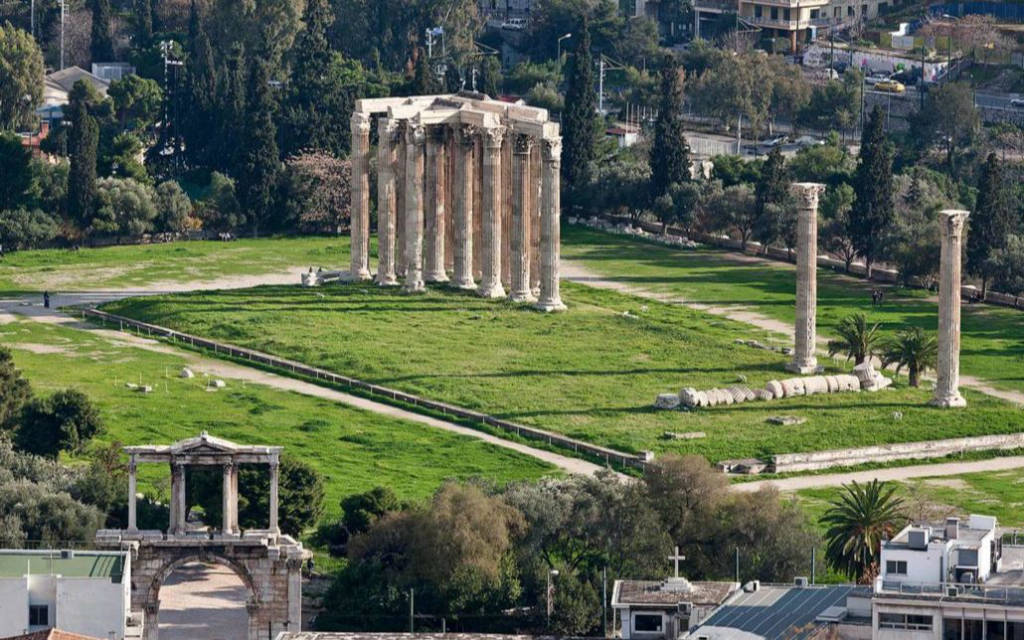Hadrian's Arch, an iconic monument in the heart of Athens, serves as a tangible link to the grandeur of ancient times. Erected in the 2nd century AD, this triumphal arch stands as a testament to the architectural prowess and imperial legacy of Emperor Hadrian. Nestled amidst the bustling modern city, the arch transcends time, offering a glimpse into the monumental aspirations of classical antiquity.
Constructed around 131-132 AD, Hadrian's Arch is situated on the edge of the historic center of Athens, near the Temple of Olympian Zeus. It marks the boundary between the old city of Athens and the new Roman city that Hadrian envisioned. The arch served as a monumental entrance gate, heralding the arrival of visitors to the city and symbolizing the grandeur of the Roman Empire.
The arch stands as a prime example of Roman triumphal arch architecture, characterized by a single monumental archway with a decorative entablature. Composed of Pentelic marble, the same material used for many other renowned Athenian structures, Hadrian's Arch showcases exquisite craftsmanship. Its intricate detailing includes depictions of mythological figures and scenes, reflecting the artistic finesse of the period.
Hadrian's Arch is adorned with inscriptions that provide insight into its purpose and significance. One inscription on the side facing the Acropolis dedicates the arch to Emperor Hadrian, while another on the side facing the Temple of Olympian Zeus attributes the arch to the Athenians, expressing their gratitude to Hadrian.
Strategically positioned, Hadrian's Arch served as a physical demarcation between the ancient city and Hadrian's new city. It symbolized the transition from the old to the new, underlining the architectural and cultural shifts brought about by Hadrian's vision for Athens. The arch also marked the beginning of a processional road leading to the sanctuary of Olympian Zeus, further emphasizing its role in civic and religious contexts.
 Register
RegisterSign in Travel Agent
Sign in Supplier
Sign in Affiliate
Sign in Guru



 Leof. Vasilisis Amalias 50, Athina 105 58, Hy Lạp
Leof. Vasilisis Amalias 50, Athina 105 58, Hy Lạp